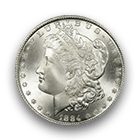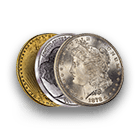Did you know July 31 is National Jump for Jelly Beans Day? While the origins for the holiday are fuzzy, the meaning of the day isn’t lost on anyone who loves these small, bean-shaped candies with a chewy center and hard shell. Jelly beans come in a wide variety of colors, with flavors ranging from super sweet to ultra spicy and everything in between. This sugary confection has been around since at least the mid-19th century and became a popular Easter treat in the United States in the 1930s.
Jelly beans have been a fixture in popular culture for decades, with reports that George Harrison, one of the four “fab” members of the legendary 1960s British rock band known as The Beatles, loved them. However, the person who really elevated the popularity of the jelly bean was Ronald Reagan, the Hollywood actor turned California governor and later two-term United States president.
Reagan was downright famous for his love of jelly beans – a love so great that the 40th commander-in-chief had a ready order of 720 bags of jelly beans made by his favorite confectioner, Jelly Belly. Why did Reagan enjoy jelly beans so much? According to the Ronald Reagan Presidential Library & Museum, he was trying to kick his smoking habit around the time of his California gubernatorial run in the mid-1960s and began eating jelly beans as a substitute for the pipe.
The 1980s president passed away in 2004 at the age of 93 after a long battle with Alzheimer’s disease. However, jelly beans remain synonymous with the “The Gipper,” a nickname Reagan earned for his role as Notre Dame football player George Gipp in the 1940 film Knute Rockne, All American. Reagan has long been a touted candidate for inclusion on a variety of numismatic items, including coins and paper money, and he eventually appeared on a 2016 Presidential $1 coin.
The Presidential $1 Coin program was originally launched in 2007 and for its first decade portrayed deceased United States presidents in the order they served in the White House. The series originally concluded in 2016 with the exception that future dollar coins could bear the portraits of other presidents two years after their death. The Presidential $1 Coin program is included among the many different modern coin collections one can build on the PCGS Set Registry.







 Copper & Nickel
Copper & Nickel
 Silver Coins
Silver Coins
 Gold Coins
Gold Coins
 Commemoratives
Commemoratives
 Others
Others
 Bullion
Bullion
 World
World
 Coin Market
Coin Market
 Auctions
Auctions
 Coin Collecting
Coin Collecting
 PCGS News
PCGS News